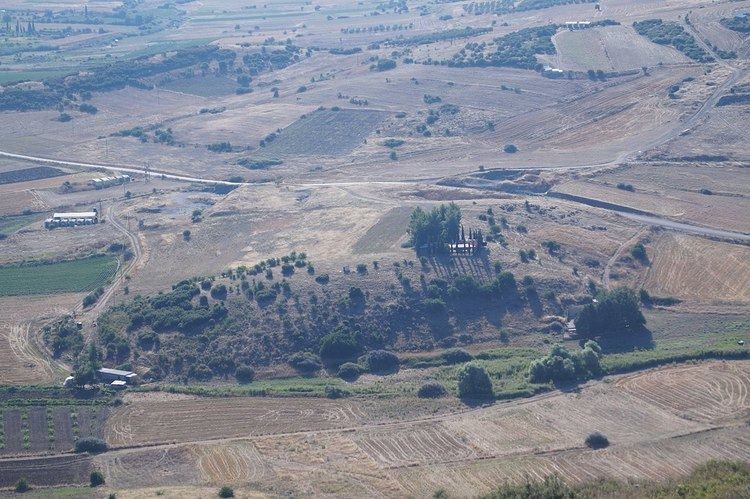Local time Tuesday 5:20 AM | ||
 | ||
Weather 7°C, Wind SW at 0 km/h, 95% Humidity | ||
Abae (Ancient Greek: Ἄβαι, Abai) is an ancient town in the northeastern corner of Phocis, in Greece. It was famous in antiquity for its oracle of Apollo Abaeus, one of those consulted by Croesus, king of Lydia, and Mardonius, among others.
History
It was rich in treasures, but was destroyed by the Persians in the invasion of Xerxes in 480 BCE, and a second time by the Boeotians and remained in a ruined state.It was rebuilt by Hadrian.
The oracle was, however, still consulted, e.g. by the Thebans before Leuctra in 371 BCE. The temple, along with the village of the same name, may have escaped destruction during the Third Sacred War (355–346 BCE), due to the respect given to the inhabitants; however it was in a very dilapidated state when seen by Pausanias in the 2nd century CE, though some restoration, as well as the building of a new temple, was undertaken by Emperor Hadrian.
The sanctity of the shrine ensured certain privileges to the people of Abae, and these were confirmed by the Romans. The Persians did not reflect this opinion and would destroy all the temples that they overcame, Abae included. The Greek pledged to not rebuild them as a memorial of the ravages of the Persians.
Among the most exciting recent archaeological discoveries in Greece is the recognition that the sanctuary site near the modern village of Kalapodi is not only the site of the oracle of Apollon at Abai but that it was in constant use for cult practices from early Mycenaean times to the Roman period. It is thus the first site where the archaeology confirms the continuity of Mycenaean and Classical Greek religion, which has been inferred from the presence of the names of Classical Greek divinities on Linear B texts from Pylos and Knossos.
The fortified site described below, originally identified as Abae by Colonel William Leake in the 19th century, is much more likely to be that of the Sanctuary of Artemis at Hyampolis.
The polygonal walls of the acropolis may still be seen in a fair state of preservation on a circular hill standing about 500 ft (150 m) above the little plain of Exarcho; one gateway remains, and there are also traces of town walls below. The temple site was on a low spur of the hill, below the town. An early terrace wall supports a precinct in which are a stoa and some remains of temples; these were excavated by the British School at Athens in 1894, but little was found.
